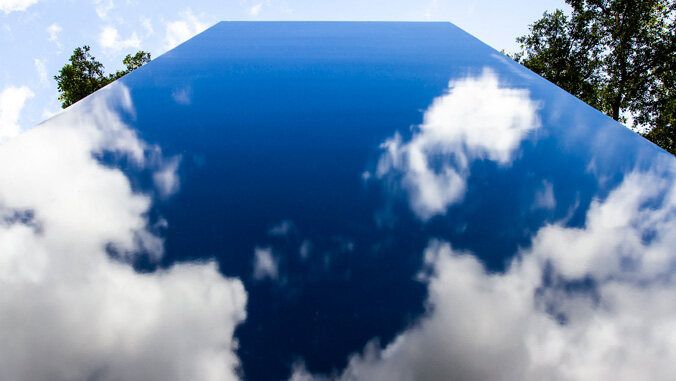

Like a scene from the epic science fiction movie 2001: A Space Odyssey, mysterious monoliths have been appearing around the world since in mid-November, making national and international news. In the 1968 film based on the famous Arthur C. Clarke books, the rectangle shaped, smooth metallic structures are built by an unseen extraterrestrial species. The first of the 2020 monoliths appeared in Utah, followed by Romania, California, Texas, and as of December 7, Pennsylvania and England joining the monolith that has already stood on the University of Hawaiʻi at Mānoa campus for decades.


“I think that they are a wonderful distraction from day-to-day concerns and an inspiring reminder of the higher goals of humanity,” said Jelena Maricic, UH Mānoa professor of physics and astronomy. “And that other civilizations are out there in the vast Universe.”
UH Mānoa’s monolith titled “Krypton” was built in 1973 in front of Watanabe Hall. The brass/bronze sculpture by Bruce Hopper is about the same size and dimensions as the one made famous in 2001: A Space Odyssey. It has served as a symbol of inspiration on the Mānoa campus.
“The feeling is that a monolith appears right before humanity collectively makes some giant leap forward,” said Kevin Croker, a postdoctoral research fellow in the UH Mānoa physics and astronomy department. “You see it on the way to class, on the way to work, and think ‘That’s going to happen here, on our campus.’ I love it.”
To inspire future generations, “Krypton” was restored in 2019 by the Hawaiʻi State Foundation on Culture & the Arts. A sound system that was part of the monolith when it was dedicated in 1973 was turned off a year later. The restoration included a redesign of the system, and test runs have already been used for wave demonstrations during physics department open houses. A more permanent sound installation is in progress.
“Krypton” is one of nearly 70 permanent art pieces on the UH Mānoa campus, including sculptures, murals, frescos, stone arches and more. The public is welcome to take a self guided walking tour when the campus reopens after the COVID-19 pandemic.









































